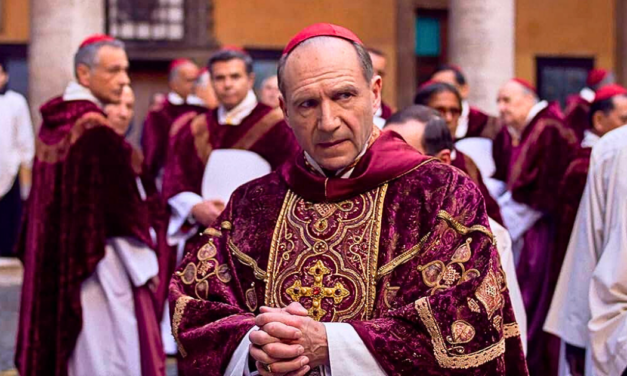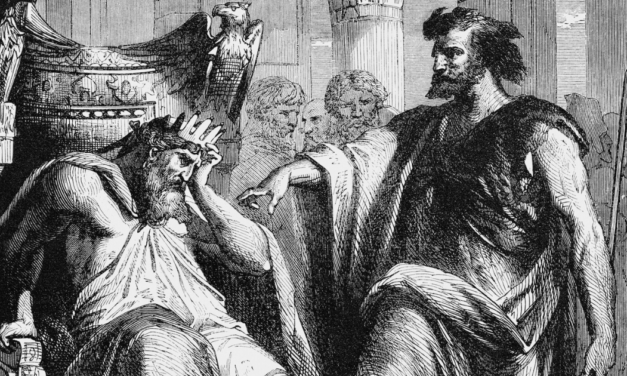This book review first appeared in the Christian Research Journal, volume 20, number 2 (November-December 1997)
A Summary Critique of
Honest to Jesus
Robert W. Funk
(HarperCollins, 1996)
In Honest to Jesus, Robert Funk — founder of the controversial “Jesus Seminar” — offers the fruit of a lifetime of study. Funk’s life work seeks to free the historical Jesus from the constraints of orthodoxy in order to help launch a new era in which the real historical Jesus is liberated from religious and political (i.e., conservative) propaganda.
Interestingly, the book does double duty for Funk. It provides him a venue to present his ideas while serving as a sort of autobiographical therapy in which he works out his disgust for orthodox Christians and their views. Apparently, Funk needed this rehabilitative journey because of his own fundamentalist childhood, from which he seeks to distance himself. As such, this book is must reading for anyone who wishes to understand the psychological and sociological drives that stand behind much of what is nowadays presented as the fruits of “objective” historical research by Funk and those of his ilk.
The book is divided into three parts. Part one lays out the methodological constraints Funk appropriates in his attempt to uncover the historical Jesus and describes the alleged evolution of the early church’s Christology. Part two offers Funk’s profile of Jesus the Galilean sage. Part three treats a potpourri of final issues in which the author seeks to debunk orthodox views of the crucifixion, resurrection, and miraculous birth and divine infancy of Jesus. The book closes with an epilogue in which Funk presents 21 theses, which he takes as consequences of his ideas and which are supposed to guide our continued interest in the historical Jesus in this new post-Christian era. Since part one is a foundation for the rest of the book, I will concentrate my review on the issues raised there.
According to Funk, modern science renders unacceptable the supernatural world picture contained in Scripture (pp. 2-3; 24). As a youth, however, Funk had valued having correct religious opinions, among them that Jesus was his personal Savior. He went to a Bible college for a time; he was a teenage evangelist; and after abandoning orthodoxy, he still sought entry into the parish ministry. He claims that he could easily have grown up like most Americans — opinionated, narrow-minded, and bigoted — if it had not been for certain teachers in his past who helped him break with his naive, childhood beliefs (3-9). Now Funk has come of age and admits that his “faith in the order and Order of the universe is in short supply most of the time”(9).
Before explaining his methodology for handling historical materials about Jesus, Funk offers us a set of confessions that expresses his personal conviction. Among them is the belief that the New Testament conceals the real Jesus as frequently as it reveals Him because, among other things, the gospel writers superimposed their Christ of faith on top of their own meager glimpse of the historical Jesus. In fact, it would be a good thing to Funk if the true historical Jesus overthrows the mythological Christ of orthodoxy and creed (20). In order to facilitate this, Funk offers his own tentative picture of Jesus the sage.
Funk lays seven ground rules that must be followed in seeking religious truth, such as the notion that human knowledge is fallible, inquiry should be open-ended, and scholars are the ones to whom we should go in finding answers to our questions (23-26). I shall leave until later my critique of Funk’s ideas, but I must point out here that he clearly intends for his rules to accomplish two things: first, to rule out the average believer’s claim to have secure knowledge about Christianity; and second, to define those who are gatekeepers for religious dialogue in terms that rule out anyone but liberal scholars.
Anyone who thinks I am wrong about this can examine either the bibliography at the end of the book (73 works are listed, and only one moderate evangelical is mentioned in an area relevant to this debate) or the list of various audiences intended for the book (11-14). Conspicuous by its absence is any attempt at all to interact with conservative scholars or give the reader any hint that a substantial body of intellectuals takes the orthodox position because of their investigation of the issues. Funk clearly intends to leave the impression that you are either a fair-minded scholar who will end up siding with him or else you are a narrow-minded, uninformed bigot who will continue in orthodoxy. Heads I win, tails you lose.
Twenty-seven years of university lecturing have taught me that when this sort of heavy-handedness occurs, what is probably driving the antievangelical scholar’s position is an attempt to work out unresolved conflict with a conservative, evangelical upbringing. The fact that Funk’s autobiographical journey is mentioned first in the book and fits this pattern, combined with the total absence of any attempt to interact with those intellectuals who have advanced substantial arguments for a conservative Christology, lead me to suspect that at the end of the day, Honest to Jesus does not represent an objective pursuit of historical truth. Rather, it is a left-wing piece of propaganda from a teenage evangelist turned adult, who is simply applying his kerygmatic zeal for a different message.
After listing his methodological rules, Funk adds nine locators (principles more subjective than rules) that serve as clues for setting the debate about religious truth against the backdrop of relevant issues. These locators allow Funk to define his own approach to this debate. Among the most important of these are: (1) the assumption that people can no longer be satisfied with traditional answers to theological questions; and (2) the assertion that “the chief test of the authentic quest for truth in our time is not ideological but ethical. It is not what we believe that is crucial but what we do….I want to know what the right-to-lifers have done for the starving children here and abroad before I listen to their theories about the beginning of life” (29).
If this second locator were so important, it is odd that Funk tells us almost nothing at all about his moral life or what he has done for various ethical causes. Apparently, he wants us to listen to his own theories about Jesus without being so informed, a charity he is loathe to extend to pro-lifers and other advocates for conservative causes. Funk’s assertion here borders on being self-refuting, a frequent problem in his approach (e.g., 1, 4, 5, 11, 12-13, 22, 23). If consistency is the hobgoblin of little minds, Funk does not have to worry about that nemesis.
Three other key assumptions for which Funk offers little argument are evolutionary Christology (31-32), a dating of the synoptic gospels that places Mark at A.D. 70 or a bit later and Matthew and Luke between A.D. 80-90 (121, 125), and the centrality of the criterion of dissimilarity (roughly, the claim that a saying of Jesus is authentic only if we can find no parallel to it in Jesus’ Jewish culture or in the early Christian sources outside the gospels) for discerning the authentic words and deeds of Jesus. Regarding dissimilarity, Funk asserts that we must contrast Jesus with His Jewish setting and distance Him from the early church’s portrait of Him (58; cf. 138-39, 145).
What should we make of Funk’s case? It fails for at least four reasons:
1. Funk seems out of touch with the recent renaissance in natural theology and with the scientific contributions to arguments for the existence of God and a biblical world view. It is unconscionable for him to continue to promote the tired bromide that people in a modern scientific era can no longer accept a biblical world view. Where is his evidence for that assumption? Large numbers of scientists and other intellectuals accept that world view, and many of them find support for it from discoveries about the beginning of the universe, information in DNA, the fine tuning of the universe, origin of life research, and so on (see, e.g., J. P. Moreland, ed., The Creation Hypothesis, InterVarsity Press, 1994). This is a crucial point. Given that we are justified in believing that God exists and is personal, loving, and holy prior to our investigation of special revelation truth claims, we are not forced to eschew miracles (as Funk does) and we can be more objective in weighing the data.
2. Evolutionary Christology fails to fit several crucial facts. (a) Paul’s epistles provide a 16-year period to test the thesis, and yet his Christology is uniformly static and high throughout his writings. Funk, however, attempts to marginalize Paul by claiming he was in serious conflict with Peter. Hence, Paul’s Christology is not representative of the early church. Unfortunately for Funk, this claim is an exaggeration and lacks sufficient evidence. Paul’s confrontation with Peter over the role of ceremonial laws was resolved and in no way supports Funk’s theories. Moreover, Paul himself checked out his gospel and Christology to make sure it was in harmony with the rest of the early church (see Gal. 1–2). (b) The various hymns and creeds embedded in Pauline and other texts show that the early Jewish Christian community had a high Christology at a very early date. (c) As Royce Gruenler argued over a decade ago (New Approaches to Jesus and the Gospels, Baker, 1982), the sayings that survive the criterion of dissimilarity allow us to trace a high Christology back to the historical Jesus Himself. (d) G. N. Stanton has shown that the earliest Christian preaching — recorded in Acts 1-12 — is chronologically early, historically accurate, and concerned with basing the proclamation of Jesus on historical, chronological, and biographical facts (Jesus of Nazareth in New Testament Preaching, Cambridge, 1974). Moreover, no less than 20 times, Paul’s letters base a moral or religious exhortation on some biographical fact about the historical Jesus that Paul assumes his readers already know. Thus, the early church did have significant biographical interest in Jesus, and given what we know about Jewish oral tradition and oral transmission generally, we are justified in believing that their portrait of Jesus is not something that evolved over time.
3. J. A. T. Robinson held to a late dating of the Gospels until some of his conservative students challenged him to reconsider their dating with an open mind (see his Redating the New Testament, Westminster, 1976). To his amazement, he discovered that the late dating was based largely on one scholar quoting another in one large circle. His own study of the issue led him to date all the Gospels prior to A.D. 70. One of the most sophisticated treatments of the dating question is John Wenham’s Redating Matthew, Mark, and Luke (InterVarsity Press, 1992). Wenham argues that the synoptics should be dated between the early 40s to the late 50s. It is clear that while Funk’s late dating of the gospels is merely a result of his methodological naturalist assumptions (miracles cannot happen), the early dating is in no way a result of supernatural commitments. For example, the two key planks in the late dating are that (a) since it takes time for Christology to evolve, the Gospels must be late, and (b) the earliest Gospel — supposedly Mark — contains predictive prophecy that was historically fulfilled in A.D. 70, and since any predictive prophecy is likely to be a fiction, Mark must be dated at or shortly after A.D. 70. Funk explicitly employs both arguments, the former on pages 31-45 (especially 31), the latter on page 223. These methodological constraints are expressions of bias and, as such, place a straightjacket on historical investigation in a way that disallows evidence for an early dating from the outset. The early dating suffers from no such bias, being established on objective historical and literary arguments (e.g., the dating of the fall of Jerusalem).
4. The criterion of dissimilarity represents the lowest point in intellectual history since Descartes went into his closet and tried to fight off skepticism. I have never seen anything that even approximates an argument to justify its employment as a necessary condition for historicity. So far as I know, it is not wielded effectively in historical studies outside the Bible. Moreover, the principle pits Jesus against His culture and the church that followed in His steps, and, at best, it yields only what is unique and not necessarily what is central about Jesus. Furthermore, several of Jesus’ sayings and deeds pass the dissimilarity test while still implying a high Christology. Yet Funk and others in the Jesus Seminar apply a second test to such sayings! If a saying expresses a high Christology, most likely it is a late addition. Again, heads I win, tails you lose. Funk admits that there are problems with dissimilarity (145), but this appears to be hand waving because he charges right ahead and bases large portions of his reconstruction of Jesus on the criterion. Funk’s employment of the dissimilarity criterion makes his reconstruction a house of cards.
In a number of places, Funk asserts that we have come to the end of an era, so that orthodox Christian theology, especially Christology, can no longer be taken seriously. I think Funk needs to start hanging out with a different crowd. In the rigorous discipline of philosophy, nothing short of a revival of conservative Christian intellectual activity has broken out in the past decade. In science, studies indicate that belief in orthodox theology is strong, and more and more scientists are joining the theistic design movement. In New Testament studies, there is a growing sophistication among evangelicals, and even moderate liberals are claiming that participants in the Jesus Seminar are a media circus with overstated ideas that are hard to take seriously. In the final analysis, Honest to Jesus is neither directed to the real Jesus nor honest.—Reviewed by J. P. Moreland
J. P. Moreland is professor of philosophy at Talbot School of Theology and Biola University in La Mirada, CA, and author of Love Your God with All Your Mind (NavPress, 1997).








